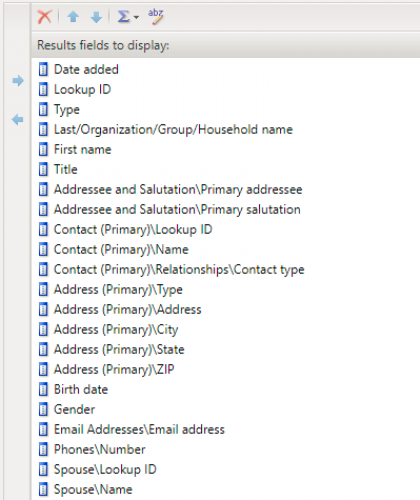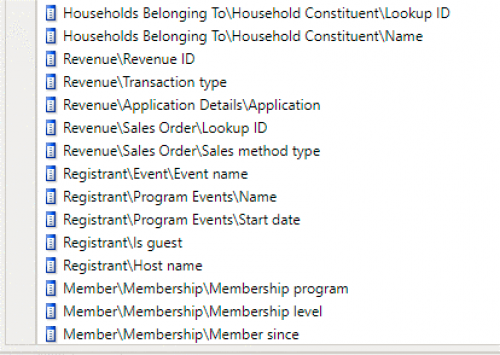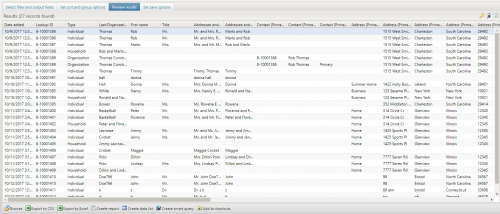A Daily Dose Of Data Health
Published
Recently, a customer posed a question in the Altru Community – “How do you all know when your data is finally clean and valid?” Another customer replied with “Never. Ever.” That response was true. Your database is a living thing constantly undergoing additions and changes and interacted with by many people, which means that even in the most ideal of circumstances, there will always be something that can be “cleaned”.
With that thought in mind, let’s talk about ways that you can incorporate data cleanliness into your regular daily routine and be as efficient as possible when there is work to be done.
It can help to approach data cleanliness is a strategic way.
Using our strategic approach, we first need to identify any issues. What are common issues that we see with new constituent records? A few that I can think of would be the following:

To make the process of reviewing these records more efficient, we can use query output to quickly see when common issues are present. It can also be helpful to output fields related to the reasons a constituent has been added, such as membership, program event purchases, and event registration information. Seeing this information can help you to determine what relationships you may want to create between these new constituents. For example, a parent who has purchased a class for a child. You may want to create a relationship between the two records and also add the child to the Household record the parent belongs to.



If you have a high volume of new records, the sort order used in your query can make it easier to see issues that need to be corrected. For example, to easily see records missing address information, sort on the Address (Primary)\Address field.


We can also use Query Browse to easily access these records and make updates and changes as necessary, such as adding missing data, creating relationships, marking addresses “Do not mail” when they are incomplete, updating primary addressee and primary salutation, and adding individuals to Households.


By employing regular “data checkups” like this one, you can easily keep your data cleaner and healthier. In turn this improves the analysis that you do, the quality of the communications that you have with constituents, and improves the efficiency of completing analysis and communications because you encounter fewer issues. All of which saves you time and money!
With that thought in mind, let’s talk about ways that you can incorporate data cleanliness into your regular daily routine and be as efficient as possible when there is work to be done.
It can help to approach data cleanliness is a strategic way.
- Identify your issues:
- Keep a list of issues that you encounter when working in your database
- Create a plan of action:
- What do the records that have issues have in common? How can we translate this commonality into a query criteria to identify and group the records in your database?
- How many records does this issue affect? What’s the most efficient way to fix the issue?
- How often do you need to check for and resolve these issues?
- Try to prevent the same issues from happening in the future:
- What can you do internally to prevent the issues?
- Are there things that you need to communicate to your constituents/patrons to help prevent issues?
Using our strategic approach, we first need to identify any issues. What are common issues that we see with new constituent records? A few that I can think of would be the following:
- No title
- Unknown gender
- Incomplete address
- No email
- No phone
- Inappropriate Primary Addressee/Primary Salutation
- Missing relationships between constituents
- Constituent included in the Household of related records
- Missing contact person (Organizations)
- Data entered in ALL CAPS

To make the process of reviewing these records more efficient, we can use query output to quickly see when common issues are present. It can also be helpful to output fields related to the reasons a constituent has been added, such as membership, program event purchases, and event registration information. Seeing this information can help you to determine what relationships you may want to create between these new constituents. For example, a parent who has purchased a class for a child. You may want to create a relationship between the two records and also add the child to the Household record the parent belongs to.



If you have a high volume of new records, the sort order used in your query can make it easier to see issues that need to be corrected. For example, to easily see records missing address information, sort on the Address (Primary)\Address field.


We can also use Query Browse to easily access these records and make updates and changes as necessary, such as adding missing data, creating relationships, marking addresses “Do not mail” when they are incomplete, updating primary addressee and primary salutation, and adding individuals to Households.


By employing regular “data checkups” like this one, you can easily keep your data cleaner and healthier. In turn this improves the analysis that you do, the quality of the communications that you have with constituents, and improves the efficiency of completing analysis and communications because you encounter fewer issues. All of which saves you time and money!
News
ARCHIVED | Blackbaud Altru® Tips and Tricks
10/12/2017 4:23pm EDT


Leave a Comment